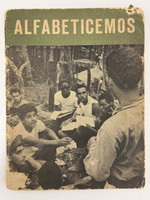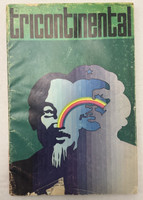- Travel
-
Exhibits
- La Portada Cubana
- Immortal Cuba: Artists Take on Their Heroes
- Seattle Poster Exhibit
- Sandra Dooley & Alejandrina Cué
- The Art of Wayacón
- Cuban Folk Art
- Cuba In Black And White
- 25 Years of Cuban Art Space
- Summer Folk Art Expo
- ¡SPRING AWAKENING FROM CUBA!
- Celebrating The Art Of Cuban Women
- Celebrating Paper, Affordable Art from Cuba
- Art of the Revolution
- Outsider Art
- Lost and Found
- En la lucha: Celebrating Cuban Women and Their Art
- Cuban Art Stash
- 100 Fires: 5 Cienfuegos Artists' Work on Paper
- Waya + Monte! Magic Realism in Cienfuegos
- Viva Cuba Viva! Poster Show
- Cultivando Sueños
- Black Lives Matter in Cuba Jan 9-March 27
- Leandro Soto: Crónicas visuales
- Cuban Canvas
-
Archive
- Global Reflection 2018: Spirit and Community
- Exhibit in the cloud: Contemporary Works on Paper
- MADE IN CUBA! MINNEAPOLIS EXHIBIT
- Cuban Posters and Photography from CCS collection
- AUTUMN SALE! Sept/Oct 2017
- SPRING ARTS AND CRAFT SALE
- Vuelo Directo/Non Stop: Alberto & Alejandro Lescay
- The Many Faces of Fidel
- Somos
- Made in Cuba!
- The US empire in Cuban graphics
- Made in Cuba/Seattle exhibit
- Entre Nos
- Looking Back
- Cuban Art Space
- Membership/Donate
- About Us
- Cuba News
-
The utilitarian cover design employs a simple two-tone color block composition—tan cardboard on the upper third with light blue lettering spelling "Matemática 3er. grado" (Mathematics 3rd Grade), and a solid medium-blue block occupying the lower two-thirds featuring cream-colored text reading "Guía para el maestro" (Teacher's Guide). This straightforward, functional aesthetic reflects the book's purpose as an instructional tool rather than a commercial product, embodying the practical approach to educational materials production during Cuba's "Year of Productivity" in 1971. The design prioritizes clarity and economy of means over decorative elements, consistent with the rationalist pedagogical philosophy underlying the curriculum.
Published by Editorial Pueblo y Educación in Havana and printed at the Cuban Institute of Books' Production Unit No. 11 "Alfredo López" in September 1971, this teacher's manual represents a significant moment in Cuban-Eastern Bloc educational collaboration. The book was authored by Erika Geißler, identified as "Asesora Superior de Estudios, Ped-Dipl." (Senior Studies Advisor, Pedagogical Diploma), and translated from the original German by Miroslav Šťastný. The Cuban Ministry of Education (MINED) approved and adapted this East German educational material for use in Cuba's newly restructured revolutionary school system, designed to accompany the 1970 student textbook.
The pedagogical approach outlined in the manual emphasizes socialist education principles, stating that third-grade mathematics teaching must contribute to educating young socialists through a formation process rooted in the teaching program. Students work with natural numbers up to 10,000, expanding their understanding of the decimal position system and developing skills in both oral and written calculation. The curriculum establishes a close relationship between theory and practice, using problem-solving with quantities and geometric bodies to help students acquire important information about their environment while developing increasingly independent capacity to solve practical and mathematical problems. Critically, the manual specifies that problematic situations and exercises should be selected to induce positive attitudes toward socialist life, fostering pride in achievements of socialist construction and respect for workers' efforts while stimulating love for the socialist homeland through good study results. This document exemplifies how Cuba adapted pedagogical methods and materials from the German Democratic Republic (GDR/DDR) to support its own revolutionary educational transformation during the early 1970s.
-
-
Discover More at the Center for Cuban Studies







